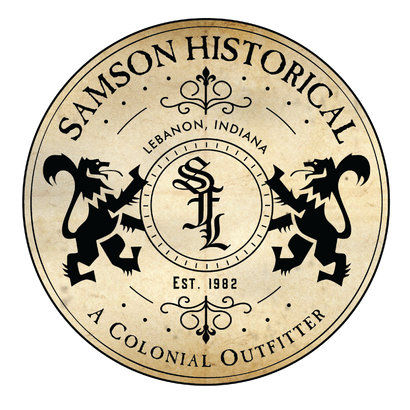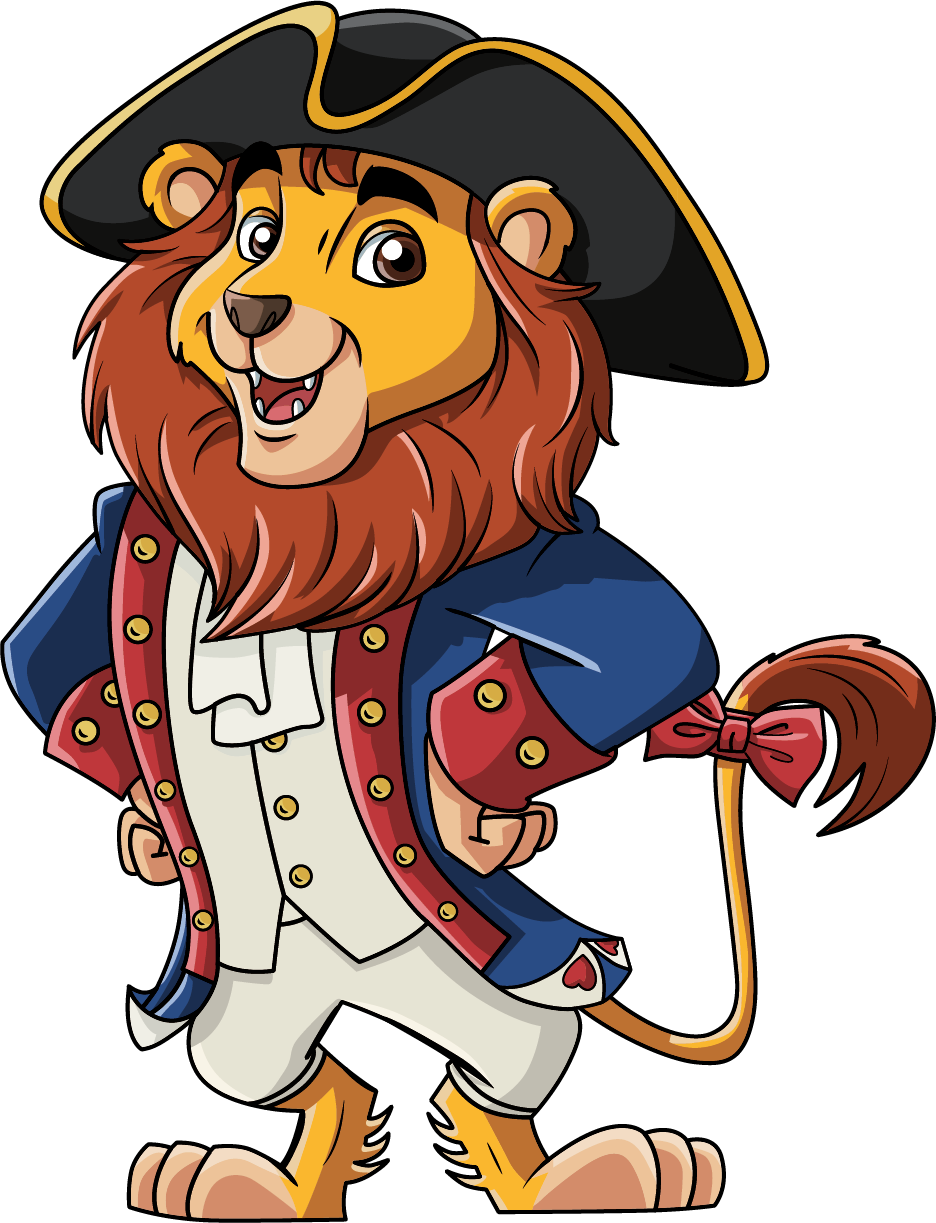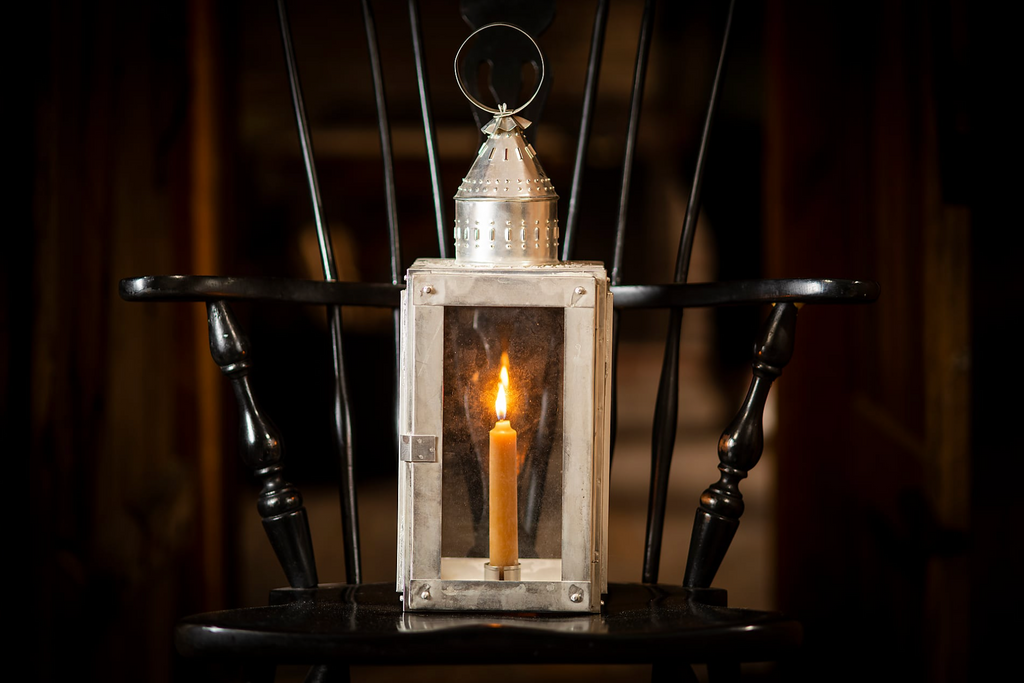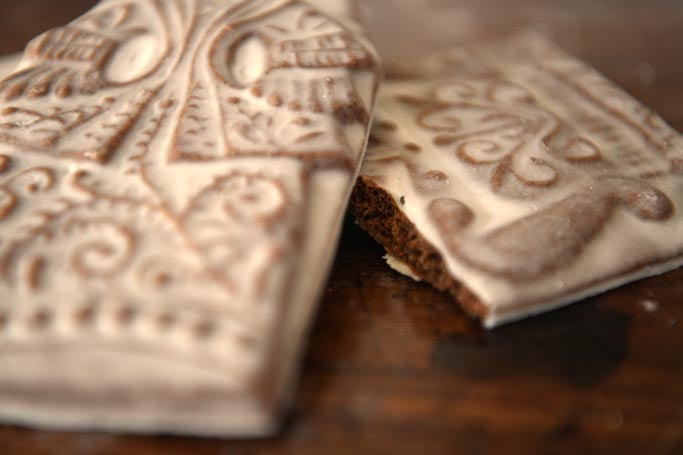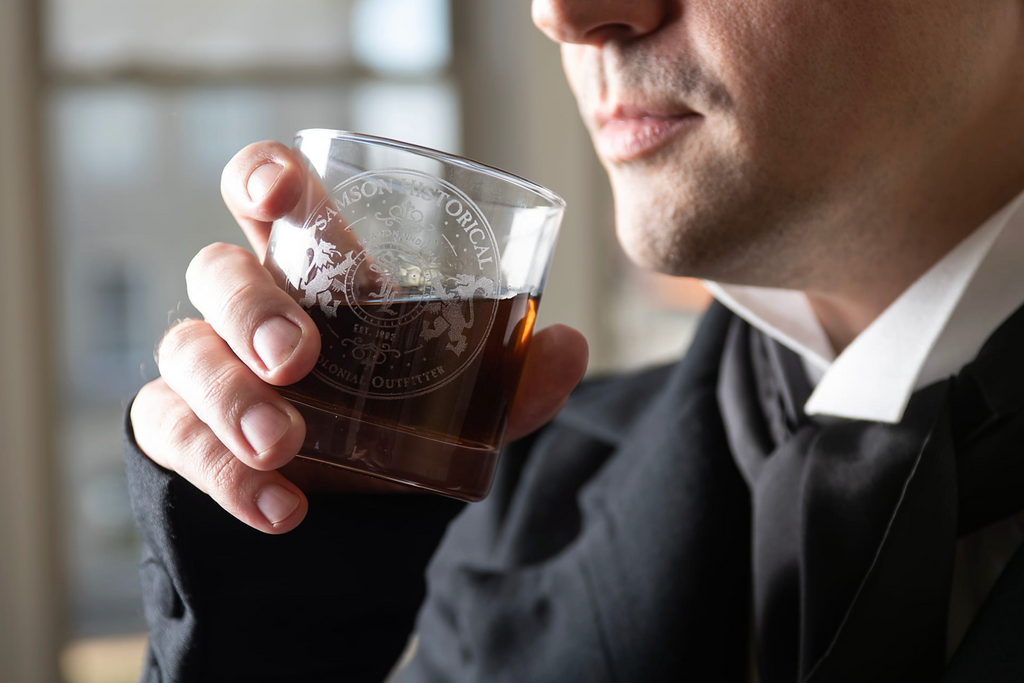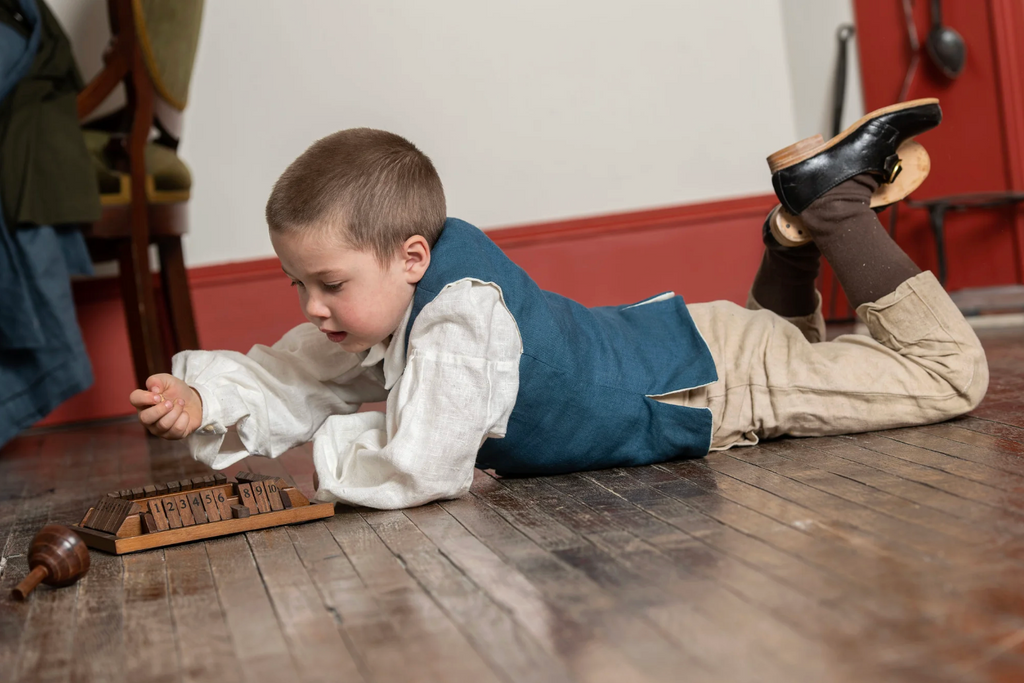Men’s Clothing
Women’s Clothing
Children's Clothing
The Telescope's Influence in Colonial America
by Hannah Reece 11 min read

By Angelia Cline
President George Washington was once a general, and in depicted portraits, one can almost always find William Lee nearby holding Washington's field spyglass. Art is a visual placeholder for the values of a place and time, and that Washington had his loyal personal valet attending to his prized military equipment reveals much about the item's significance.
The ancient Greek philosopher Plato once said, "The beginning is the most important part of the work." That is certainly true in the case of the telescope, for its humble beginnings are anything but simple, and its invention disrupted the then-known sciences of the world. Any present-day technologies that utilize a magnifying lens owe thanks to this piece of equipment. History has an exciting way of casting its shadow hundreds of years into the future. In 2009, three things happened to which many paid no heed:
The wayfaring Hubble Telescope had its very last in-flight servicing.
The famous optical equipment company Dolland & Aichison fell into anonymity as it was bought out by another optician company.
Finally, in 2009, a dusty, abandoned copy of Poor Richard's Almanac brought its lucky owners half a million dollars.
However, shadows cannot be cast without light. The light behind this shadow, which still blankets modern scientists, is the telescope. Known as a scientific instrument that makes distant objects appear near, these items are now commonplace in the American market and household. Anyone can access a telescope and hold a pathway to the stars in the palm of their hand. However, this was not always the case.
Although simply defined as a scientific instrument that makes distant images appear near, telescopes have quite a pragmatic but complex history as a staple in the military and astronomical culture of America.
The Role of Astronomy in Daily Life
In 1732, Benjamin Franklin released Poor Richard's Almanac under the pseudonym of Richard Saunders. It was meant for the common man, as evidenced by his subtle knocks at those in power ("The King's Cheese is half wasted in pairings; but no matter, 'tis made of the people's milk"). Additionally, it included all sorts of useful information and proverbs concerning day-to-day happenings, with even long-range weather predictions finding their way into the pages. Franklin went on to publish an almanac each year for the next quarter-century, surpassing the other almanac producers of the time.
Since Franklin's rendition of the ever-popular almanac was meant to be part satire and part common sense, it is interesting that he mentions famous scientists right alongside his aphorisms. On Sunday, the 6th of May, 1753, Franklin describes the upcoming eclipse as "a small black Patch in a Lady's Face" and then goes on to add, "Dr. Halley puts this Conjunction an Hour forwarder than by this Calculation." This a whole 16 years before famed American astronomer David Rittenhouse charted the orbit of Venus, signaling the burgeoning continental fascination with the stars.
The common man in the 1700s to whom Franklin sold his 10,000 copies or so a year had basic knowledge about astronomy. Franklin could afford to keep producing this often tongue-in-cheek almanac that made predictions based on "lunations, eclipses, judgment of the weather" because of America's growing obsession with the stars. The path to the scientific explosion in the 1800s is due not only to people like Benjamin Franklin, who made the stars familiar and benign to the common man, but also to the person who allowed that same common man to hold the stars an arm's length away from himself.
The Development of the Achromatic Lens
In 1609, Galileo was able to make a telescope that showed him the craters of the moon. However, he was not the first to make a telescope, but he was the first to succeed in seeing the earth's astral neighbor planets with his modifications to the original telescope. Although this was a monumental achievement, there were some problems with his version of the telescope that limited its functionality. It had a very narrow width of view and chromatic aberration, or quite simply, the different wavelengths of colors make the images blurry due to an inability to focus. Streaks of color appear at the edge of the image, impeding a clear view and drawing the eye away from the image.
At this point in history, telescopes came in only a few forms. One was the refractor telescope, which includes Galileo's innovative model. Refractors contain. There are lenses that are layered to observe the object in question. In order to achieve a minimum of chromatic aberration and a long view, the telescopes of old were built to be very long. In contrast, reflecting telescopes have a single lens but use a system of concave and convex mirrors to produce an image free of chromatic aberrations. However, the setup is complicated and must be continuously calibrated for the telescope to work. There were some refinements made on these types of telescopes by English inventor Isaac Newton, Scotsman James Gregory, Frenchman Laurent Cassegrain, and American William Herschel. All of them were brilliant in their ways, but none could address the issue of chromatic aberration without either bulky equipment or impractical setups. Furthermore, even though Isaac Newton decreed it impossible to produce a lens-based magnified image without chromatic aberration, a silk maker in London, England, disagreed.

John Dolland was self-taught in many academic pursuits. In 1750, he launched an optical equipment business with his son, Peter, as his partner. Before long, John Dolland's interest was in achromatic lenses, which could filter out the refraction of light and, according to him, does not "disturb the vision" when using the lens. This is possible because of two optical lenses that are both chromatically aberrant in different ways, and they are cemented together. Like previous reflecting telescopes, one lens had to be concave, and one lens had to be convex. However, the wavelengths are different, and so one counterbalances the other, resulting in an achromatic lens.
Achromatic lenses provide a clearer picture, so to speak, and do not bring inaccurate colors into the view. Sometimes early in the 1750s, a lensmaker named George Bass learned of Dolland's interest and brought him the design for one. Dolland's immediate interest was so keen that he tested it, and then he had to have it. In 1758, Dolland sought the patent for the achromatic lens.
One of these achromatic telescopes appeared for the first time in Dolland's shop in London. It created quite a stir and was lauded as the "greatest improvement in optical instruments" and "a vastly more manageable and useful instrument" than any telescope that had been on the market before. The Royal Society recognized him for the achievement, and King George III even commissioned Dolland as his optician. Royalty from all over the world sought to buy one of the new achromatic telescopes, and other members of the elite paid good money to follow the royal trend. However, John Dolland had very little time to enjoy his financial and political success, for he died in 1766.
Five years after Dolland's death, the original inventor of the achromatic lens fought to obtain the patent, but the case went against him. John Dolland had left the patent to his son, so it was no wonder that Peter Dolland fought so hard to keep it. The court even acknowledged that Chester Moor Hall was the original inventor, making achromatic lenses since 1733 and contracting out the work to several opticians to grind the lenses to proper dimensions. According to an issue of the Gentlemen's Magazine, Lord Mansfield said about the case, "It was not the person who locked up his invention in his escritoire[AC4] [AC5] that out to profit by a patent for such invention, but he who brought it forth for the benefit of the public."

The benefits to the public were many, especially with the subsequent creation of the "portable observatory" a decade later that Peter Dolland describes in the patent submission:
This instrument, which of all others is the most amusing to the lovers of astronomy, is now rendered by the following improvements, greatly superior to any hitherto produced.
As the whole weight does not exceed thirty pounds, it may be said to be truly portable; yet, by the steadiness of all the parts, and the perfection of the achromatic telescope, the observations may be made to very great exactness.
The focal length of the achromatic object-glass is about 17 inches; it is composed of three glasses and admits of an aperture of 2 inches. Besides these essential improvements, every part has been reduced to the most simple state; and several, which in other instruments of this kind were found superfluous, have been entirely rejected.

Such an improvement on the original telescope was revolutionary in terms of the practical use of telescopes practical uses. Even though the achromatic lenses became the basis for almost every type of navigation tool with its patent and Dolland's commercial production in 1758, this "portable" model could be comfortably housed in brass instead of cardboard--thus making it perfect for navigation at sea. They also no longer required heavy mounting. This was a far cry from the telescopes of a century prior, which could be a hundred feet long and useless for any purpose other than looking at stationary objects. With telescopes highly portable, very accurate, and commercially available, things were about to change.
Little did John and Peter Dolland know, but they had just pioneered the production of a device that would prove a boon to American revolutionaries.
A Symbol of the Colonial World
In The Sailing Ships of New England 1606-1907, the author presents a very familiar tale of instruments that become valuable to people's everyday life:
That so important an instrument as a telescope or spyglass is rarely mentioned in books on navigation or in sea journals seems strange, and it is exceedingly difficult to obtain early information of any being taken to sea.
This could be because of a report in 1720 that indicates that rudimentary telescopes were "impractical" because of their length. The first time a telescope is mentioned in the colonies is in a "no questions asked" style ad in the Boston Gazette for the return of a British officer's Prospective Glass in 1734. No mention is made of its size or functionality. However, in 1758, the first recorded war use of the telescope account in the colonies takes place during the French and Indian War. Captain Robert Rogers writes in an account that he sent out men to "look down the Lake with Prospective Glasses." As this is after Dolland's "discovery" of achromatic lenses, it stands to reason that telescopes were not needed or wanted by colonists in the New World until they could prove their functionality and usefulness. Dolland's mass production of telescopes had started in 1758. It is no surprise that one finally made its way to the new world in the guise of a piece of military equipment.
Since then, the telescope has become ubiquitous with the spirit of American adventuring. From around 1770 to 1850, the business of creating telescopes boomed, and the models carried by pirates, revolutionaries, and adventurers varied. These portable telescopes could be bell-shaped, cone-shaped, pear-shaped, or barrel-shaped, but each one of them was made possible by the problem of chromatic aberration being solved. The telescope also acquired many different names during this period, each suited to its own purpose depending on who carried it: spyglass, monocular, and prospect glasses are three of the most popular. "Bring 'em near" is said to have been the common vernacular among pirates and buccaneers, though many researchers dispute the actual use of the term, claiming it has been claimed and romanticized in fictional works. No matter the nomenclature, even though most of the equipment was manufactured in England, very few ships or explorers left home without a telescope of some fashion.
At least one prominent figure in the American Revolution was highly dependent upon these "spye glasses." Upon his death, President George Washington owned twelve small spyglasses and one larger telescope. The larger telescope was a London-made telescope and had a sun filter. George Washington referred to one of the smaller telescopes as his "pocket telescope" and even left it to a cousin in his will. This was the very same spyglass that Washington used during his battles during the American Revolution, as he identified it as an item, "which constituted part of [his] equipage during the late War." Equally, three paintings on display at Mount Vernon of Washington all reveal his emphatic use of telescopes: "George Washington on the battlefield of Trenton" (1845), "Le General Washington" (1780), and the famous "Washington Crossing the Delaware" (1832). In the 1792 painting of "George Washington at Trenton," he holds a high-quality spyglass produced by Peter Dolland. In "Washington at the Point of Rock" (1776), Washington holds a footlong telescope to view the carnage.

Washington even mentions the item in his correspondence, though it must have been a relatively small purchase in comparison to other requisitions for his company. In his August 1776 letter to the New York Convention, he writes, "I am extremely obliged by the order for the Telescope, I have obtained it and will try to employ it for the valuable purposes you designed it." As George Washington was known to be very reserved in countenance, this is quite a fetching compliment for the telescope he was issued. He immediately saw its value to his expeditions.
In fact, one spyglass was passed down through Washington's family for 120 years, eventually finding its way to the American Art Association auction in February 1920. It is described in the five-page authenticity letter as
The brass telescope made by Dolland, London. Engraved 'G. Washington, Mount Vernon.' (Defective.) In the morocco case. Length closed, 19 ¼ inches; diameter, 2 ⅛ inches. Note: In the inventory of General Washington's estate appears the item "11 Spye glasses, $110.'
Washington was not the only founding father to favor the telescope as a necessary piece of daily equipment. Telescopes were everywhere--from the wealthy using them as eyewear for opera to King George III greeting guests to the naval ships dotting the seas. They were generally reserved for the elite and those who could afford them but also were considered a mandatory piece of equipment for navigational and military purposes.
Ad Astra per Aspera
Until late in the eighteenth century, America, the young nation had been occupied with two back-to-back wars. Boots were firmly planted on the ground, but by the end of the century now, American eyes had begun to track wander to the skies. The October 1780 eclipse was well-documented in America by multiple observers. One stargazer at Cambridge, New York observed:
The observers were so unfortunate as not to perceive the beginning of the eclipse. They supposed the shadow would have entered the sun's disc more westerly than it did.--They therefore attended to a different part of the sun's limb.
As American astronomy was a relatively new venture, such a mistake is not surprising. However, this was but an early chapter in America's fascination with the stars, and the subsequent nineteenth, twentieth, and twenty-first centuries are full of American discoveries concerning the reach of a telescope's lens--thanks all to the prevalent use of telescopes in the late 1700s.
Chester Moor Hall and John Dolland had solved chromatic aberration for this generation of scientists 250 years prior, and for more than a quarter-century, a telescope named after American astronomer Edwin P. Hubble has allowed scientists all over the world to see black holes, age galaxies, and have moonlight conferences with the stars. In May 2009, the last servicing mission to the Hubble Telescope was performed. A Cosmic Origins Spectrograph was installed. This piece of equipment is a type of telescope that only sees ultraviolet light and increased Hubble's imaging by up to 70 times. The language is different, but John Dolland would have understood the array of filters and lenses installed because all of them serve one purpose: avoiding chromatic aberration. George Washington would have appreciated its ability to show previously unexplored regions of space. Of course, many do not know that images that Hubble reports back to NASA are all achromatic thanks to Photoshop, helping scientists reveal awe-inspiring images. Twenty-nine years after its launch, Hubble Telescope has finally reached its absolute limits, but the world has not stopped improving the once-rudimentary telescope.
For no one can deny that the telescope has a long and proud history in its capacity to advance scientific understanding. Principles that guided forward thinkers like John and Peter Dolland over two hundred and fifty years ago are producing images of the outer regions of our galaxy. Dolland's company that survived so many generations may have been absorbed into the financial chaos of the economic crash in 2009, but his legacy still has a place in this world and off it.
Benjamin Franklin once wrote, "The noblest question in the world is, 'What good may I do in it?'"
Apparently, if one can believe that Newtonian theorems can be disproved--one can do anything.
Leave a comment
Subscribe
Sign up to get the latest on sales, new releases and more …
